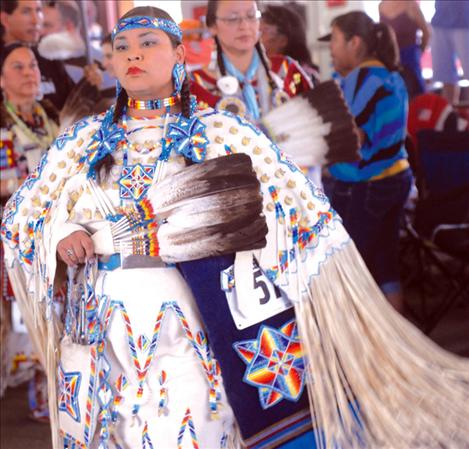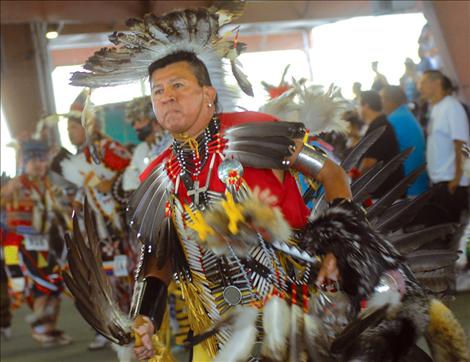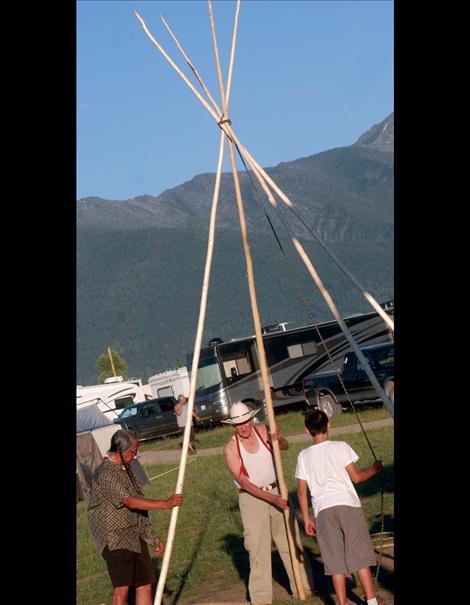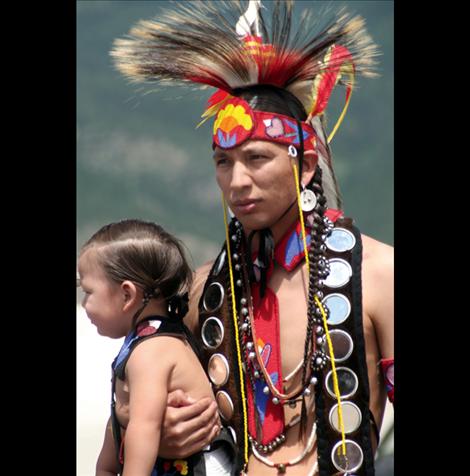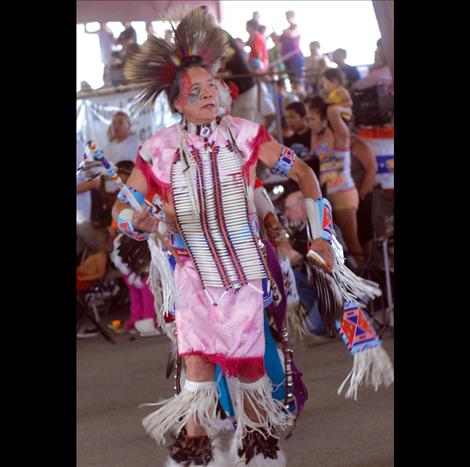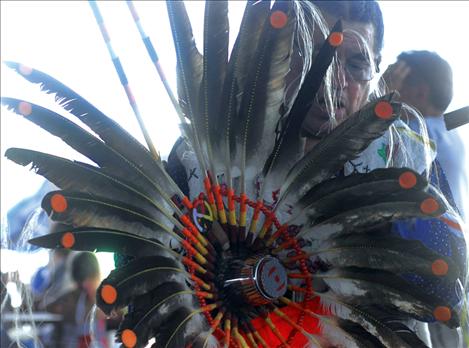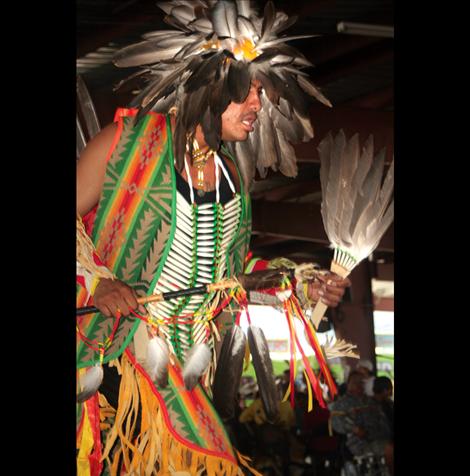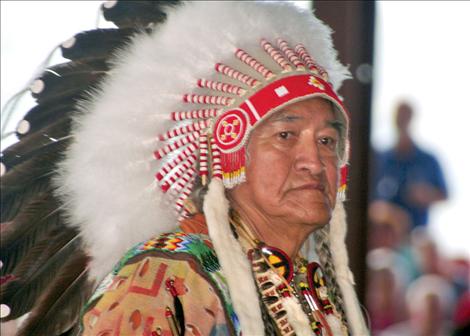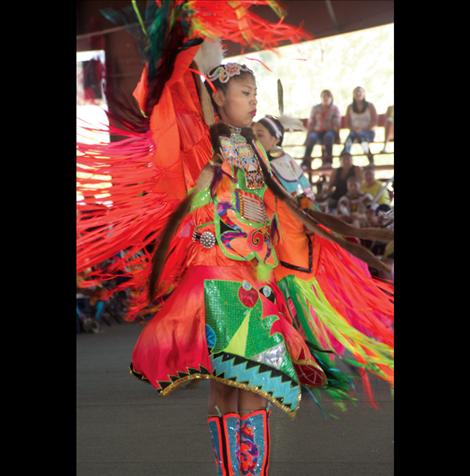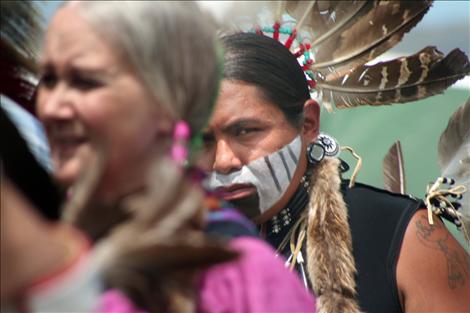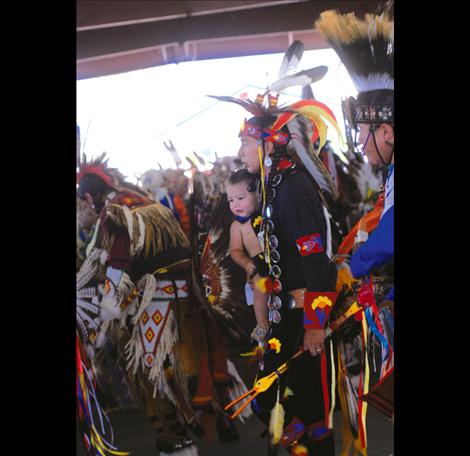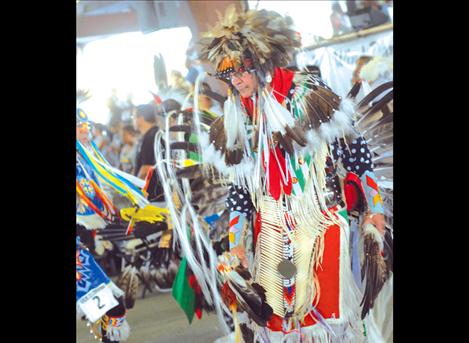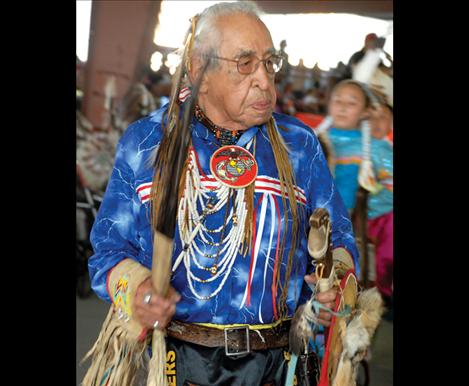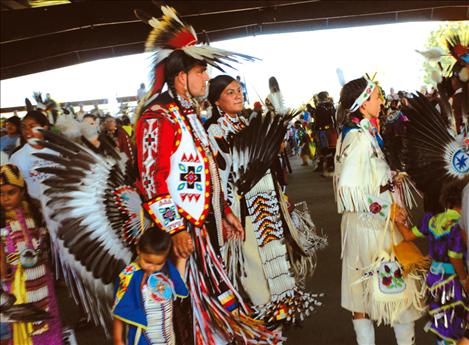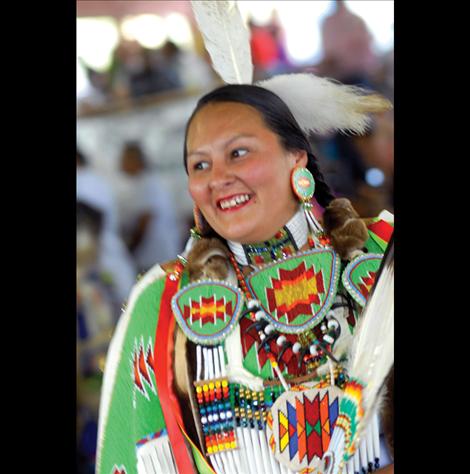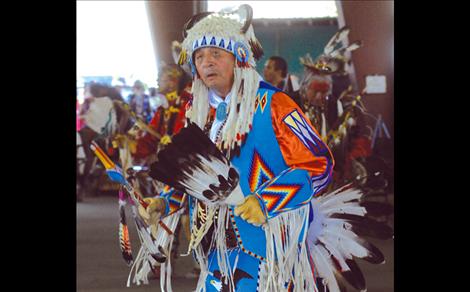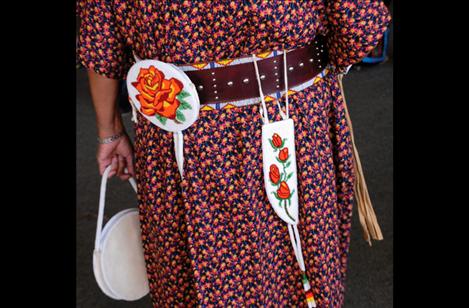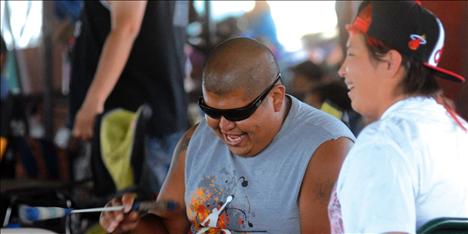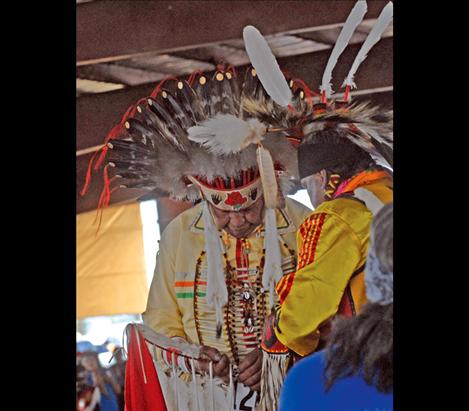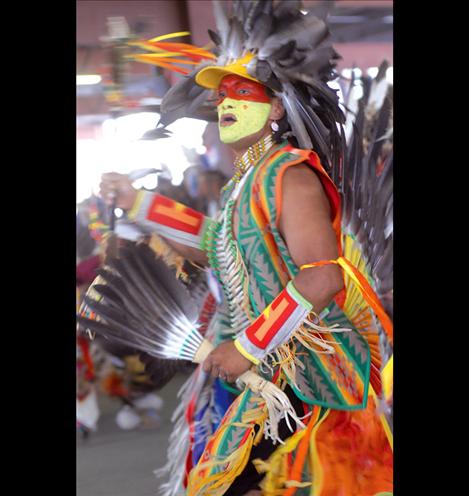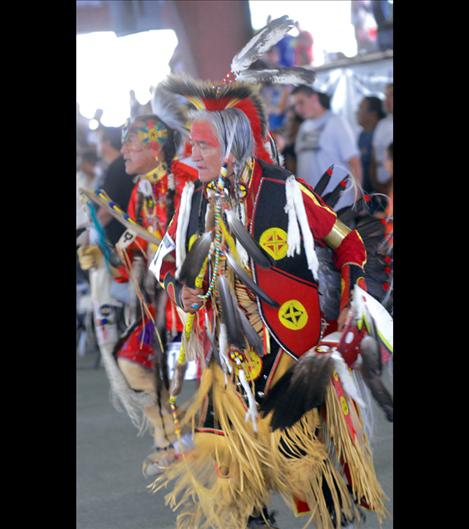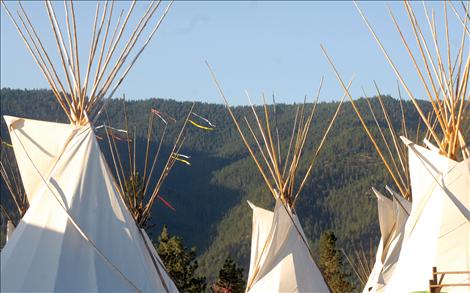Tradition: Arlee Celebration in its 115th year
Hey savvy news reader! Thanks for choosing local.
You are now reading
1 of 3 free articles.
Steven Small Salmon thinks back to his earliest memories of the Arlee Celebration as he gets ready for the Snake Dance dressed in an eagle headdress, buckskin shirt, and horsewhip.
He remembers the celebration, now in its 115th year, being much smaller 50 years ago.
“Fifty years ago it was dying,” he said. “There were less than 50 people and two drums.”
Today, he said, there are about 32 drum groups and hundreds of dancers. Adding the element of competition to men, women, teen and children’s dance categories caused the powwow to develop.
“Women didn’t compete back then,” he said.
But now the ladies do dance competitively — instead of standing behind the drummers like they did years ago, he said. Children under six also have a dance category.
Small Salmon said the horsewhip with two short leather straps that he carries as he dances has a purpose.
“I use it to straighten out the dancers,” he said.
In a serious tone, Small Salmon talks about the importance of honoring his culture as he dances.
“I dance for my people: my elders, the ones who died and the ones coming up,” he said.
He explains the Snake Dance as the announcer asks the dancers to get ready.
“It’s hundreds of years old,” he said. “It’s about coming back from war.”
Louie Plant, arena director, described the Snake Dance.
“The people follow each other in a side-winding form like a snake,” he said. “It’s not competitive. It brings people together to celebrate tradition.”
Plant says the night before the celebration he had a hard time sleeping.
“I was thinking of everything that needed to be done,” he said. “I want to make sure it runs well.”
Salisha Old Bull, chairwoman, said it takes money and time to coordinate the event.
“The committee works hard all year,” she said.
Technology makes it easier to organize dancers at the powwow.
“Each dancer has a number with a barcode on it,” she said. ”We keep track of the points each dancer earns with the computer.”
Dancers earn points for dance style, staying with the beat of the drum and being fully dressed.
“Everyone has their own style,” she said.
Shandin Pete, committee member, explained that the powwow has evolved as it has grown.
“Originally only the warriors would dance,” he said. “Through time and periods of government oppression few people held onto the dance, but the people started bringing it back.
“Today we are reenacting many adopted dances from many different tribes like the Coffee Dance. In the past, non-Indians saw a dance around what they thought was a coffee pot. It really was buffalo blood but the name Coffee Dance stuck. It’s one of our main dances now.”
Drummer Dan Trahan, with 30 years of drumming experience, says as he drums he is “commemorating the early years of the celebration.” The drum to him is “the heartbeat of the people,” he says as he sits in a circle of drummers in front of an elk hide drum.
“I’m feeling the past mixing with the present.”















